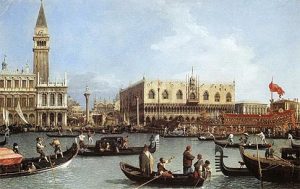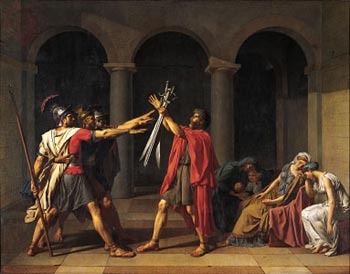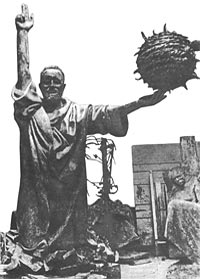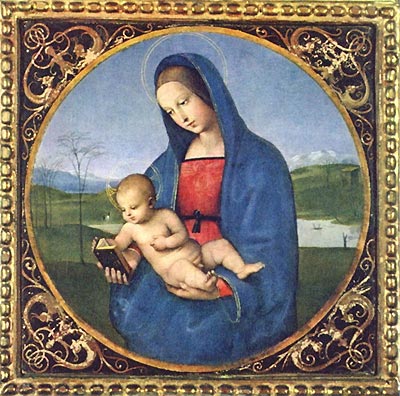Venetian landscape painters of the 18th century
 By the beginning of the 18th century, the once mighty Venice had lost its importance as the political center of the Mediterranean, becoming a peculiar center of pilgrimage. Rich travelers from all over Europe came here to admire the beauty of the city. And everyone dreamed of taking a picture, drawing or engraving depicting a corner of a beautiful city. No wonder the landscape was the most popular among other genres.
By the beginning of the 18th century, the once mighty Venice had lost its importance as the political center of the Mediterranean, becoming a peculiar center of pilgrimage. Rich travelers from all over Europe came here to admire the beauty of the city. And everyone dreamed of taking a picture, drawing or engraving depicting a corner of a beautiful city. No wonder the landscape was the most popular among other genres.
“The population of Venice,” wrote the historian Monnier, “is a festive and idle crowd: poets and hangers-on, hairdressers and usurers, singers, dancers … – everything that lives in pleasures or creates them.
In Venice, there are seven theaters, two hundred constantly open cafes, countless casinos in which candles are lit only at two o’clock in the morning and in which the most noble gentlemen and ladies mix with a crowd of strangers … In the afternoon before the cafe five hundred visitors sit at the tables and speak mixed with the sound of spoons, which prevent sorbet. Under the arches of the Procurations, raincoats of gray silk, blue silk, red silk, black silk, green camisoles trimmed with gold and trimmed with fur, purple cassocks, robes with divorces, leopard clutches, paper fans, turbans, gold robe, sultans and small female cocked hat, defiantly shifted to the ear. This is a population of extravaganza, oriental bazaar, sea port, where all customs meet, where all adverbs collide and live together. ”
The working people of Venice – the workers of the manufactories, gondoliers, fishermen, porters, carriers. This environment in many ways nourished Venetian art, which had a wide popular basis. Gasparo Gozzi, brother of the famous playwright Carlo Gozzi, said that completely illiterate people painted beautiful views without any special knowledge. But the petition of artisans, carpenters and masons, filed in 1741. They ask that during holidays, in the morning and after dinner, they be taught the Italian language and the rules of famous architects, as well as how to carry out drawings and precise profiles.
In Venice of the XVIII century, there were two areas of landscape painting: architectural and specific, or leading. The landscape-veduta enjoyed the greatest recognition. In literal translation, the word “veduta” means “species.” Distinguished two types of it. “Exact veduta” developed as a continuation of the urban landscape, common in the Netherlands of the XVII century. This kind of painting involved artists such as L. Karlevaris, B. Belotto. For the most accurate transfer of perspective, they used an optical camera. The Venetian Algarotti describes her device as follows: “Through glass lenses and a mirror, a device moves an image of an object and gives an image on a sheet of paper. This artificial eye is known as an optical camera. Since it allows only bright rays from an object to pass into focus, it gives an image of exceptional purity and strength. Nothing can be more pleasing to the eye and more useful than a picture made with this method. The outlines are accurate, the perspective and chiaroscuro are amazingly realistic, while the color is vibrant and powerful. ”
Giovanni-Antonio Canaletto (1697–1768), who managed to combine in his landscapes documentary accuracy with a subtle sense of nature, became a true master of the story.
He began working as a painter in the workshop of a decorator, and in 1719 went to Rome. Upon returning to his homeland, he began to work independently, and soon his fame spread outside Venice. Canaletto began to depict significant events in the life of his native city. Thus, in 1726, the French ambassador was received. The picture about this event is now in the Hermitage. Soon he wrote “Celebration of the Ascension”, then “Reception of the imperial ambassador Count Bolano”.
The painter worked in the open air, sketching in pencil, which was a novelty at the time. In his paintings, with honest faithfulness and perfect perspective, interesting corners of the city were reproduced. At the same time, he constantly cared about the beauty of painting – the painting “The departure of the Venetian Doge for betrothal with the Adriatic Sea” is characteristic. Carefully written out buildings, as if enveloped in humid air, golden sunlight, a multitude of human figures, the greenish waters of the Adriatic, where every wave is visible, the crimson spot of the Doge’s ship – everything is subordinated to the purpose of conveying a magnificent, festive spectacle.



